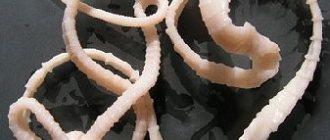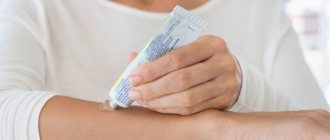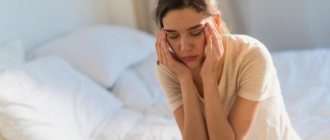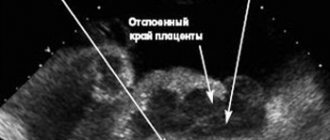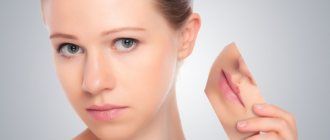Useful properties of plantain
This plant contains many useful substances, including iridoid glycosides, acids (oleanolic, chlorogenic, citric, silicon, succinic, benzoic, oxalic), flavonoids (apigenin, luteolin). The plant contains a lot of vitamins, namely A, C, K, pectin, carotene and tannins.
Thanks to the presence of these active ingredients, plantain has:
- antibacterial;
- anti-inflammatory;
- antiseptic;
- and astringent properties.
Indications for use
- This plant is very effective in the treatment of skin diseases, wounds, various inflammations of the skin and mucous membranes.
- It helps well with coughs, chronic bronchitis and sinusitis.
- Plantain is used as a natural cold remedy.
- It is considered useful for treating anemia, hemorrhoids and respiratory diseases.
- The traditional method of using the leaves of this plant is to bandage wounds to stop bleeding and promote healing.
- It is also often used for conjunctivitis and inflammation of the eyelids.
- External use is often used for skin problems as plantain soothes and prevents redness. It will be useful in case of itching, dermatosis, acne rosacea, inflammation and minor skin lesions. Using a compress of plantain leaves is useful as a soothing remedy for insect bites.
Plantain seeds are also widely used. Thus, due to their rich composition, they are used to treat many diseases. The seeds have a certain laxative effect. They are also used to treat the following ailments:
- hemorrhoids;
- so-called enterocolitis;
- intestinal inflammation.
Doctors say that plantain seeds perfectly help cleanse the body of harmful bile acids and even reduce bad cholesterol in the blood.
Seed decoctions prepared at home are used for various skin diseases. Doctors often recommend that their patients take a decoction to lower blood sugar levels. It helps in the treatment of female infertility.
The seeds also have medicinal and health properties for men. Consumption of seeds leads to stabilization of the emotional state and helps fight depression.
Among other useful characteristics of plantain, the following properties should be noted:
- The plant has an antimicrobial effect.
- The seeds are used to treat colitis and, as mentioned above, intestinal inflammation. The fact is that the mucus contained in the seeds immediately envelops the intestinal walls, thereby protecting them well from any irritation.
- Plantain is often used in dentistry. Rinsing the mouth with a decoction or tincture helps with stomatitis, periodontal diseases, and gum inflammation. Preparations with this plant soothe toothache.
- Plantain perfectly increases appetite and has a very beneficial effect on the functioning of the stomach. Therefore, it will be useful for gastritis with low acidity and is often prescribed for stomach ulcers.
In the cosmetological field, a decoction of plantain leaves is used to cleanse oily facial skin. To do this, the broth is poured into ice molds and frozen. In addition, hair is washed with an infusion of plantain leaves to improve its condition.
How and when to collect plantain
This plant can be found everywhere. But for collection for medicinal purposes, it is recommended to look for places away from dusty roads and industrial facilities. It is better to collect plants in the morning in dry weather. You can start collecting raw materials in the summer months and in the first half of autumn.
It is recommended to collect not only leaves, but also roots and seeds. In this case, the plant is dug out of the ground completely along with the roots, for which a tunnel is made. But it is worth remembering that the seeds are suitable for use when they are fully ripe. Therefore, you should wait until they ripen and turn brown.
But the leaves can be collected even before the plant blooms. To cut them, you can take garden shears or pruning shears. After harvesting, the plantain must be washed in running water and then divided into parts.
Leaves, roots and seeds are deposited separately. Then the raw materials should be dried. To do this, it is laid out on a paper or fabric surface in places that are not exposed to direct sunlight and are well ventilated.
Procurement of raw materials
The collection of plantain leaves continues during the plantain flowering period (May-August). Plantain adsorbs toxic substances well, so it cannot be collected along highways, near enterprises, etc. Only green leaves without damage caused by fungi or insects are suitable for harvesting.
It is recommended to collect them after rain, when the leaves of the plant have dried a little. They are torn off by hand or using a knife.
Spread out in a thin layer, the raw materials are dried until the leaves of the plant acquire a brown-green color. You can dry the leaves in well-ventilated rooms, or in a special dryer at 40-50 °C. Store raw materials in wooden boxes or cardboard bags. The healing properties of plantain last for 2–3 years.
Contraindications for use and possible side effects
When treating with plantain, it is recommended to pay attention to existing contraindications. External use is suitable for almost any person, with the exception of those who are allergic to this plant.
For internal use there are a number of restrictions:
- First of all, the use of plantain is not recommended for all those whose gastric juice has a high level of acidity.
- Remedies from this plant should be used with caution in patients suffering from bronchial asthma.
- In case of exacerbation of a stomach or intestinal ulcer, the use of the plant is also not recommended.
- It is not advisable to use plantain for treatment for people who take anticoagulants or coagulants, since this changes the effect of their influence.
- It is also worth remembering that consuming large amounts of this plant can lead to constipation.
- People with a high tendency to form blood clots and high levels of blood clotting are not advised to take psyllium.
- In addition, treatment with this herb should not be carried out for a long time, as it increases the risk of blood clots.
Potential danger
The medicinal herb plantain helps with many diseases due to its many beneficial properties, but, like any medicine, it has a number of contraindications:
- individual intolerance or allergic reaction to any component of the plant;
- increased acidity;
- Do not use the herb if there is an exacerbation of diseases of the gastrointestinal tract: gastritis or ulcers;
- It is strictly forbidden to use plantain if you have increased blood clotting, thrombophlebitis, or a tendency to thrombosis.
In the absence of contraindications, medications from the plant are well tolerated; in rare cases, diarrhea, vomiting, abdominal pain, and allergic reactions are possible.
Recipes with plantain for various diseases
There are internal and external uses of plantain. For external use, the leaves should be applied to the skin, as their juice can stop bleeding from small cuts and disinfect the wound. For internal use there are various methods.
The simplest recipe: take 3 grams of plant leaves (6 teaspoons) and pour a glass of boiling water. Let it brew for 10 minutes, then strain.
The drink is ready to drink. You need to drink one cup warm twice a day before meals. This recipe will help in the treatment of respiratory diseases. The drink has an expectorant effect, so it can effectively remove phlegm.
This tincture can also be refrigerated. Then it can be used as a mouthwash, which will help in the treatment and prevention of inflammation in the oral cavity.
For coughs and other diseases, fresh leaves of the plant will be useful. But they are only available in summer. The rest of the time, it is recommended to use plantain-based cough syrups.
Herbal syrup is considered a very effective remedy for the treatment of the upper respiratory tract, both in children and adults. They can be purchased in pharmacies, and their cost is significantly lower than synthetic cough medicines. You can also prepare syrup at home.
To prepare the syrup, take a large number of young plantain leaves, which are poured into a pan and filled with water. Cook for two hours. After this, sugar is added in the amount of 600 grams for each liter of syrup. At this stage, you can add a few juniper berries.
Then put the pan back on low heat to melt the sugar. After it is melted, you need to wait until the syrup cools down. Next, it is bottled, which are stored in a dry and cool place.
For insect bites and wounds, it is recommended to wash fresh plantain leaves and crush them with a rolling pin on a cutting board. The resulting suspension should be applied to the affected area.
To cure neurosis or insomnia, you should use the following tincture recipe. Dried leaves in the amount of 1 tablespoon should be poured with one mug of boiling water. Leave for 10 minutes.
Next, you should strain the drink. You need to take the tincture three times a day, 1 tbsp. spoon. The course of treatment is 1 month. This tincture will also be useful for cardiovascular diseases and hypertension.
Purulent wounds can be treated with fresh leaves. Take several leaves, which should be washed and chopped. Next they are applied to the wound. The procedure should be repeated several times a day until the wound heals.
Since fresh leaves are only available in summer, plantain juice can be preserved in advance, which can be used to treat wounds and skin diseases at any time of the year.
To do this, prepare a lot of young leaves, which are pre-washed. They should then be crushed to extract the plant juice. This juice is bottled in glass jars that need to be stored in the refrigerator.
Another beneficial property of plantain is its ability to reduce pain in the stomach and intestines. But it can be used to treat gastritis, enteritis and ulcers only with low acidity of gastric juice.
The substances contained in the plant help soften cramps, relieve pain, promote digestion, and also prevent inflammatory processes and accelerate tissue regeneration.
There are several recipes for the treatment of diseases of the digestive system. The easiest way is to eat fresh, washed plantain leaves daily. This will help increase stomach acid as well as relieve pain.
Another way is to use freshly squeezed juice. To do this, 1-2 teaspoons of juice are mixed with the same amount of honey. The medicine should be taken twice a day for one week. This method will also be useful for coughing.
Sometimes plantain is used to make tea. It has a pleasant aroma and helps in the fight against cough, smoking, nervous disorders and internal pathologies. To prepare tea, you need to pour dry plantain leaves into boiling water. Let it brew for 15 minutes.
You should drink tea 4 times a day, one glass (200 ml). The drink becomes more pleasant if you add 1 teaspoon of natural honey.
Another recipe for making tea is often used. Take 4 tablespoons of dried leaves, which are filled with 500 ml of boiling water. Next, cover the lid and cover the container with a thick towel. Leave for two hours.
After this, the tea is filtered and consumed warm 4 times a day, one teaspoon before meals. The recommended course of drinking tea is seven days.
Tea is prepared only from dried and finely chopped leaves. Freshly harvested and still green parts of the plant are not suitable for this purpose. They are applied directly to open wounds, the juice is extracted, or processed to make decoctions and tinctures.
According to user reviews, improvement occurs very quickly when using these recipes. The effect is visible after 1-2 days. In the future, this effect will only intensify. However, before starting self-treatment, it is recommended to consult a doctor.
Chemical composition of leaves, photo
There are many types of plantain. Medicinal varieties contain the maximum amount of active substances and beneficial properties. All parts of the plant are used in medicine: leaves, stem, seeds, root system.
The herb contains the following elements:
- tannins and phytoncides - components that provide a bactericidal and hemostatic effect;
- polysaccharides – promote rapid healing of wounds, relieve inflammation;
- organic acids – natural substances that improve metabolism and are natural antiseptics;
- carotenoids are natural antioxidants that successfully fight free radicals and help fight cancer cells;
- vitamins B, C and K;
- saponins are substances with anti-inflammatory properties.
100 grams of leaves contain 26 kilocalories. Nutritional value is calculated as follows: 0.4 grams of proteins, 0.09 g. fat and 7 grams of carbohydrates.
The energy ratio of proteins, fats and carbohydrates in percentage is 6%/3%/108%.
Plantain in cosmetology
Most women, when choosing care products, prefer natural cosmetics made from medicinal plants.
For example, a unique biochemical complex with antiseptic and regenerating properties makes it possible to actively use plantain in cosmetology.
Plant-based products are used to treat acne, rashes and inflammation, increased oiliness of the epidermis, as well as to prevent age-related changes.
Traditionally, plantain was used in cosmetology as a disinfectant and anti-inflammatory agent: for redness and irritation of the skin, insect bites, cuts, burns and abscesses. Of no less interest was the plant’s ability to initiate renewal and regeneration processes.
Thanks to its universal properties, plantain is suitable for any skin type: it makes oily skin matte and dry skin moisturized. An affordable “green doctor” can solve a whole range of cosmetic problems.
For pulmonary tuberculosis
With systematic and regular use of plantain preparations as an additional treatment, it is possible to completely cure tuberculosis. The juice of the plant, which has antibacterial and anti-inflammatory properties, cures this dangerous disease. Take 3-4 doses of 5 ml per day, every 3-4 hours.
The therapy is long-term, courses lasting 2-3 weeks with weekly rest periods until the condition improves. This treatment can restore calcified areas of tissue—small petrification in the lungs.
- Kalanchoe - medicinal properties for the human body, how to grow and use at home
- Calendula [benefit for skin and use in cosmetics]
- Agave flower medicinal properties
- Plantain herb medicinal properties in medicine
Plantain for the face: action and problem solving
- Anti-inflammatory, bactericidal: cleanses and tightens pores, fights acne (acne), eliminates inflammation on the skin;
- Toning, moisturizing, regenerating: increases firmness and elasticity, triggers collagen synthesis, restores and revitalizes the skin;
- Tightening, decongestant, anti-cellulite: activates lymphatic drainage, eliminates swelling of the face and eyelids, provides a sustainable lifting effect;
- Venotonic, vasoconstrictive: smoothes out the manifestations of rosacea, eliminates redness and irritation of the skin;
- Exfoliating, whitening: thanks to the high content of salicylic and other organic acids, it produces natural peeling, evens out skin texture and tone.
Where does grass grow?
As the name suggests, the plant grows along roads. However, this is not the only place where you can find grass: plantain grows on forest edges, overgrown meadows and fields, in wastelands, garden plots and clearings. It is difficult to find the plant in the forest, since plantain loves sunlight and warmth.
The grass begins to flower in June-July. It is recommended to collect seeds, juice and leaves as they bloom - this happens in early August. The collection of medicinal raw materials at the beginning of summer will be endowed with a minimum amount of beneficial properties, organic acids and trace elements.




